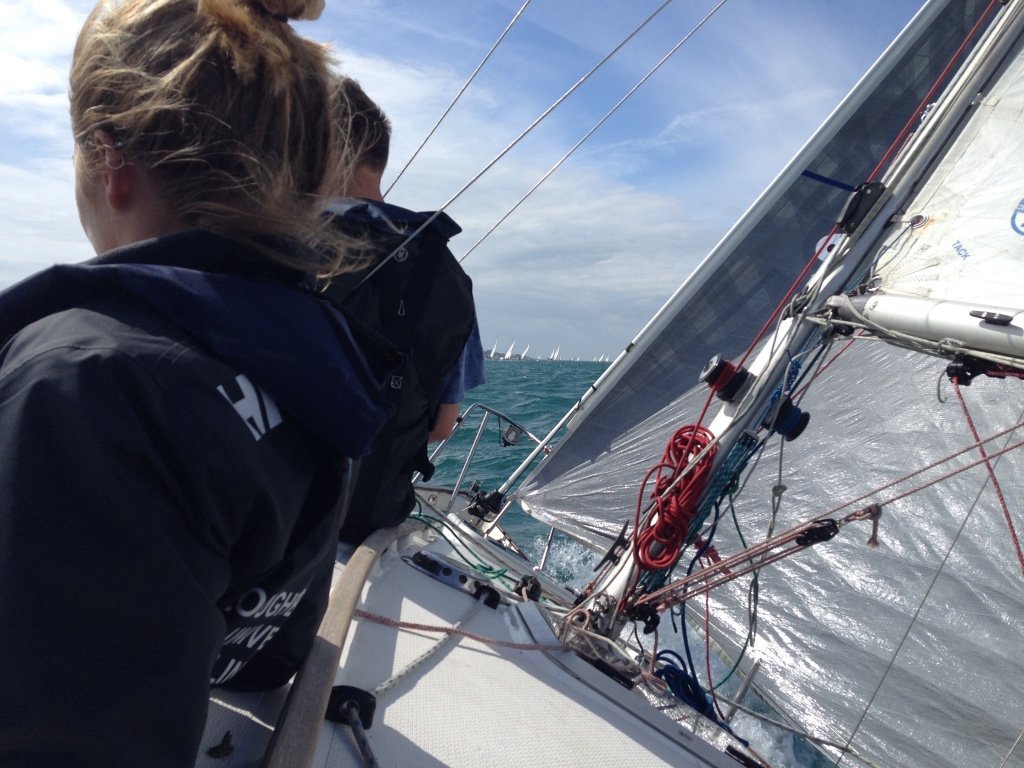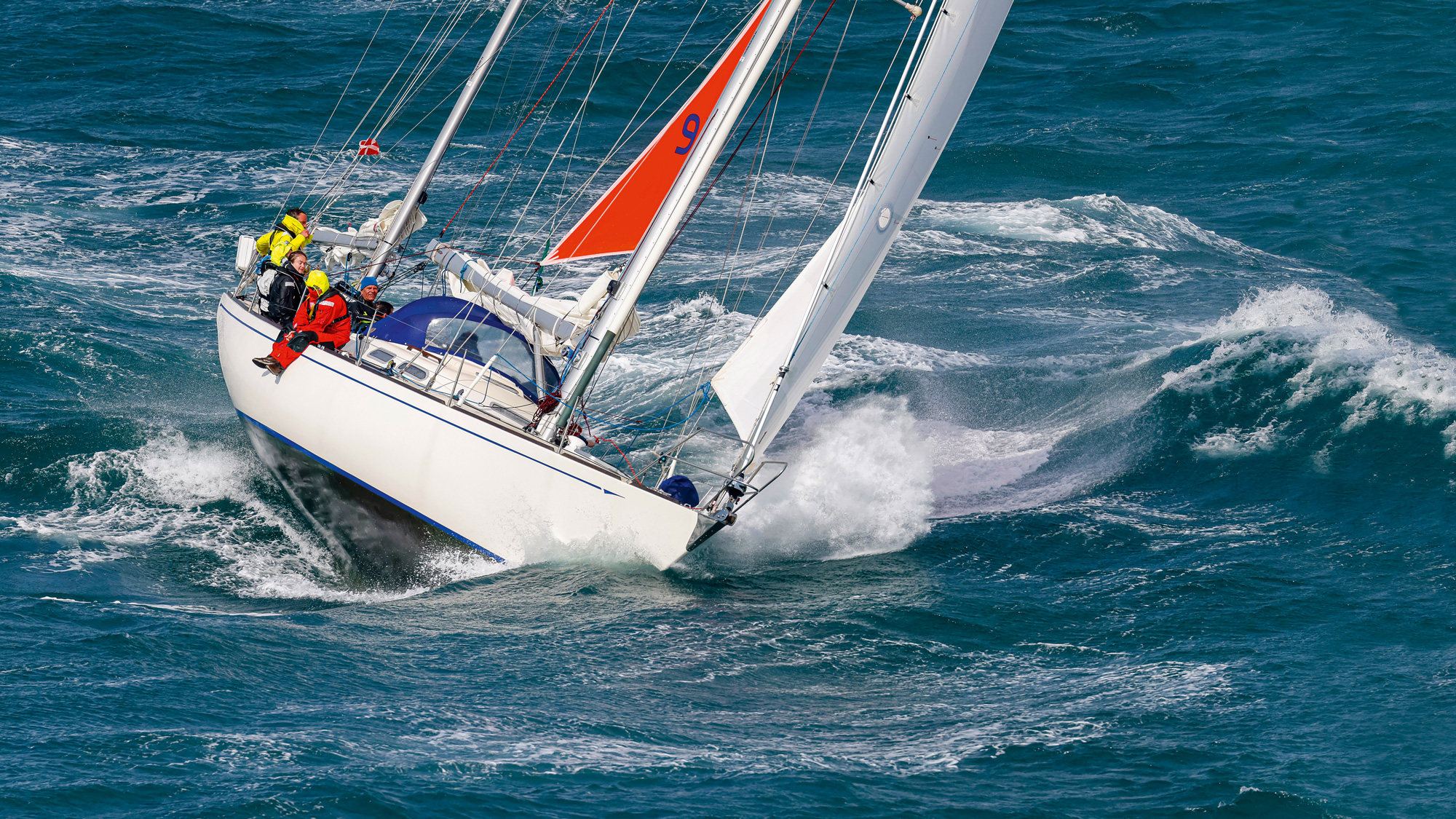Deep Sea Sailing: Preparations And Safety Tips
Deep sea sailing requires proper preparations and safety measures to ensure a smooth and secure journey. To prepare for sailing, it is important to plan your itinerary in advance, pack the necessary supplies including sun protection, combat seasickness, and ensure all travel documents are in order.
When it comes to safety, it is crucial to stay off the water during storms or periods of high winds, carry a flashlight for visibility, and be aware of navigation lights and potential lightning conductors on the boat. Additionally, heaving to is a popular strategy for heavy weather sailing, helping to keep the boat in a stable position during storms.
By following these preparations and safety tips, sailors can enjoy their deep sea adventures with peace of mind.
Essential Preparations For Deep Sea Sailing
Prepare for deep sea sailing by following these essential tips: plan your itinerary, combat seasickness, bring appropriate gear, protect yourself from the sun, and ensure you have all necessary travel documents and supplies. Additionally, stay safe by avoiding sailing during storms or high winds, carrying a flashlight, and being aware of navigation lights and lightning risks.
:
When it comes to deep sea sailing, thorough preparations are crucial to ensure a safe and enjoyable experience. Here are some essential preparations to consider before setting sail:
Check The Weather Forecast And Sea Conditions:
- Keep an eye on the weather forecast and sea conditions before heading out to sea. This will help you plan your journey accordingly and avoid potential risks.
- Pay attention to wind speed, wave heights, and any potential storms or adverse weather conditions that may affect your voyage.
- Ensure you have access to up-to-date information throughout your trip, as weather conditions can change rapidly at sea.
Inspect And Maintain Your Sailing Vessel:
- Thoroughly inspect your sailing vessel before embarking on a deep sea journey. Check for any signs of damage or wear and tear that may compromise its seaworthiness.
- Ensure that all the essential components of your sailing vessel, such as rigging, sails, engine, and navigation equipment, are in good working order.
- Regularly maintain and service your vessel to prevent any mechanical failures while at sea.
Ensure You Have The Necessary Safety Equipment:
- Safety should always be a top priority when deep sea sailing. Make sure you have the necessary safety equipment on board to handle any emergencies or unexpected situations.
- Life jackets, harnesses, and personal flotation devices should be readily available for every crew member. Check that they are in good condition and properly fitted.
- Fire extinguishers, first aid kits, distress signals, and navigation lights are also essential safety equipment that should be checked and maintained regularly.
Plan Your Route And Create An Itinerary:
- Before starting your deep sea sailing journey, it’s important to plan your route and create a detailed itinerary.
- Consider factors such as the duration of your trip, intermediate stops, and any specific points of interest along the way.
- Familiarize yourself with charts, navigational aids, and any potential hazards or restricted areas along your planned route.
Remember, deep sea sailing requires careful preparation and adherence to safety guidelines. By checking the weather forecast, inspecting your vessel, ensuring you have the necessary safety equipment, and planning your route, you’ll be well-prepared for a memorable and safe deep sea sailing adventure.
Safety Tips For Deep Sea Sailing
A commonly used strategy for heavy weather sailing. Other strategies include reefing the sails, maintaining a proper lookout, and securing loose items on the boat. It’s important to be prepared and follow these safety tips to ensure a safe deep sea sailing experience.
:
Sailing on the deep sea can be both exhilarating and challenging. To ensure a safe and enjoyable experience, it is crucial to understand basic sailing techniques, follow navigational rules, maintain communication and emergency procedures, deal with seasickness, and handle unexpected weather conditions.
Here are some safety tips that you should keep in mind before embarking on your deep sea sailing adventure:
Understanding Basic Sailing Techniques:
- Learn how to properly hoist and lower sails, steer the boat, and handle the rigging.
- Familiarize yourself with the different parts of the boat and their functions.
- Practice maneuvering in open waters and docking in various conditions.
- Master the art of navigation using charts, compass, and navigational aids.
Knowing And Following Navigational Rules:
- Understand the International Regulations for Preventing Collisions at Sea (COLREGs).
- Stay aware of your surroundings and keep an eye out for other vessels.
- Follow the right-of-way rules and give way to larger vessels and those restricted in their ability to maneuver.
- Use proper lighting and sound signals to indicate your intentions to other boats.
Maintaining Communication And Emergency Procedures:
- Have a reliable communication system on board, such as VHF radio or satellite phone.
- Establish a communication plan with your crew members and let someone onshore know your itinerary.
- Familiarize yourself with distress signals and emergency procedures.
- Conduct regular safety drills to ensure everyone knows their roles in case of an emergency.
Dealing With Seasickness:
- Pack anti-seasickness medication and remedies.
- Avoid heavy meals and alcohol before setting sail.
- Stay hydrated and keep your eyes on the horizon.
- Choose a well-ventilated spot on the boat and get plenty of fresh air.
Handling Unexpected Weather Conditions:
- Stay updated with the weather forecast before and during your trip.
- Be prepared for changes in weather conditions and have appropriate gear, such as rain gear and warm clothing.
- If a storm is approaching, find a safe anchorage or head to port.
- Trust your instincts and make safety your top priority.
By following these safety tips, you can ensure a smooth and secure deep sea sailing experience. Remember, preparation and knowledge are key to enjoying the open waters while staying safe. Bon voyage!
Navigation And Communication Systems
In deep sea sailing, preparations and safety tips are essential. Navigation and communication systems play a crucial role in ensuring a safe and successful journey. By equipping your sailboat with the right navigation tools and staying connected through communication systems, you can navigate effectively and stay prepared for any weather conditions at sea.
Types Of Navigation Tools And Equipment:
- GPS (Global Positioning System): GPS is an essential navigation tool that uses satellite signals to determine the exact location of a vessel on the sea. It provides real-time positioning, making it easier to navigate and plot courses accurately.
- Charts and Maps: Nautical charts and maps are indispensable tools for deep sea sailing. They provide detailed information about coastlines, water depths, navigational aids, and potential hazards. These charts and maps are usually available in both paper and digital formats.
- Compass: A compass is a basic but crucial navigation tool. It helps sailors determine their direction in relation to magnetic north. It is reliable even when other electronic navigation systems fail.
- Radar: Radar is used to detect other vessels, land masses, and floating objects in the vicinity. It helps sailors navigate safely by providing information about potential obstacles and hazards, especially in low visibility conditions.
- Depth Sounder: A depth sounder, also known as a depth finder or echo sounder, measures the depth of water beneath a vessel. It alerts sailors of shallow areas or underwater hazards that may not be visible on the surface.
Proper Use Of Gps And Charts:
When using GPS and charts for navigation, it’s important to:
- Cross-reference: Always cross-reference GPS information with charts to ensure accuracy and identify any discrepancies. This helps avoid potential navigational errors.
- Update: Regularly update GPS systems and charts with the latest information to account for changes in coastlines, navigation aids, and potential hazards. Outdated information can lead to incorrect navigation.
- Plan routes: Use charts to plan routes in advance, taking into consideration potential hazards, waypoints, and desired destinations. GPS can then be used to navigate these planned routes.
- Maintain backups: It’s crucial to have backup navigation tools available in case of GPS malfunction or loss of electronic devices. Paper charts and traditional navigation techniques can be relied upon as backups.
Communication Systems On Board:
- VHF Radio: Very High-Frequency (VHF) radios are commonly used for communication between vessels, marinas, and coastguards. They allow sailors to communicate important messages, seek assistance, and stay updated on weather conditions.
- Emergency Beacons: Emergency beacons, such as EPIRB (Emergency Position Indicating Radio Beacon) and PLB (Personal Locator Beacon), are essential for distress signaling. These devices transmit distress signals, which can be detected by search and rescue teams in case of emergencies.
- Cellular and Satellite Communication: Cellular and satellite communication systems provide a means of communication when sailing within range of cell towers or satellite coverage. They can be used for voice calls, text messages, and accessing weather reports.
Importance Of Checking For Updates And Weather Reports:
- Safety: Regularly checking for updates, including charts, navigational information, and weather reports, is crucial for the safety of the crew and the vessel. It helps to avoid potential hazards, plan routes accordingly, and make informed decisions.
- Weather Conditions: Weather reports provide valuable information on current and forecasted weather conditions, including wind speed, wave height, and storm warnings. This information helps sailors make informed decisions about sailing routes and timing.
- Navigation Accuracy: Updates to charts and GPS systems ensure the accuracy of navigational information. Ongoing updates account for changes in coastlines, navigational aids, and potential hazards, ensuring reliable navigation.
Remember, deep sea sailing requires careful navigation and effective communication systems to ensure safety and a successful journey. By utilizing the right navigation tools, properly using GPS and charts, maintaining communication systems, and staying updated with weather reports, sailors can have an enjoyable and secure sailing experience.

Credit: www.safe-skipper.com
Frequently Asked Questions For Deep Sea Sailing: Preparations And Safety Tips
What Should I Prepare For Sailing?
To prepare for sailing, follow these tips: – Shake off sea legs – Plan your itinerary in advance – Prepare for seasickness – Bring the right luggage – Protect yourself from the sun – Prepare travel documents – Prepare groceries – Stay off water during storms or high winds – Carry a flashlight for nighttime sailing – Remember navigation lights and lightning conductor on sailboats – Consider heaving to in heavy weather sailing.
How Can You Be Safe While Sailing?
To be safe while sailing: 1. Stay off the water during storms or high winds. 2. Carry a flashlight for visibility after dark. 3. Remember to use navigation lights on sailboats with engines. 4. Be cautious of lightning and its conductor, the mast.
What Are The Strategies For Heavy Weather Sailing?
Heaving to is a preferred strategy for heavy weather sailing. The boat turns close to the wind, the jib is backwinded, and the helm is locked, allowing the boat to jog along without turning broadside to waves.
How Would You Prepare For Life At Sea?
To prepare for life at sea, follow these tips: 1. Plan your sailing itinerary in advance. 2. Prepare to combat seasickness. 3. Bring the right luggage and protect yourself from the sun. 4. Prepare your travel documents and groceries.
Conclusion
Deep sea sailing requires careful preparations and adherence to safety tips to ensure a smooth and enjoyable experience. Planning your sailing itinerary in advance, preparing for seasickness, and protecting yourself from the sun are crucial steps to consider. Equally important is bringing the right luggage and ensuring you have all necessary travel documents and groceries.
Additionally, when it comes to safety, it is important to stay off the water during storms or periods of high winds. Remember to carry a flashlight in case you remain on the water after dark and be aware of the navigation lights required for sailboats with an engine.
Lastly, understanding storm tactics like heaving to can be invaluable in heavy weather conditions. By following these preparations and safety measures, you can make your deep sea sailing adventure both exciting and safe.








